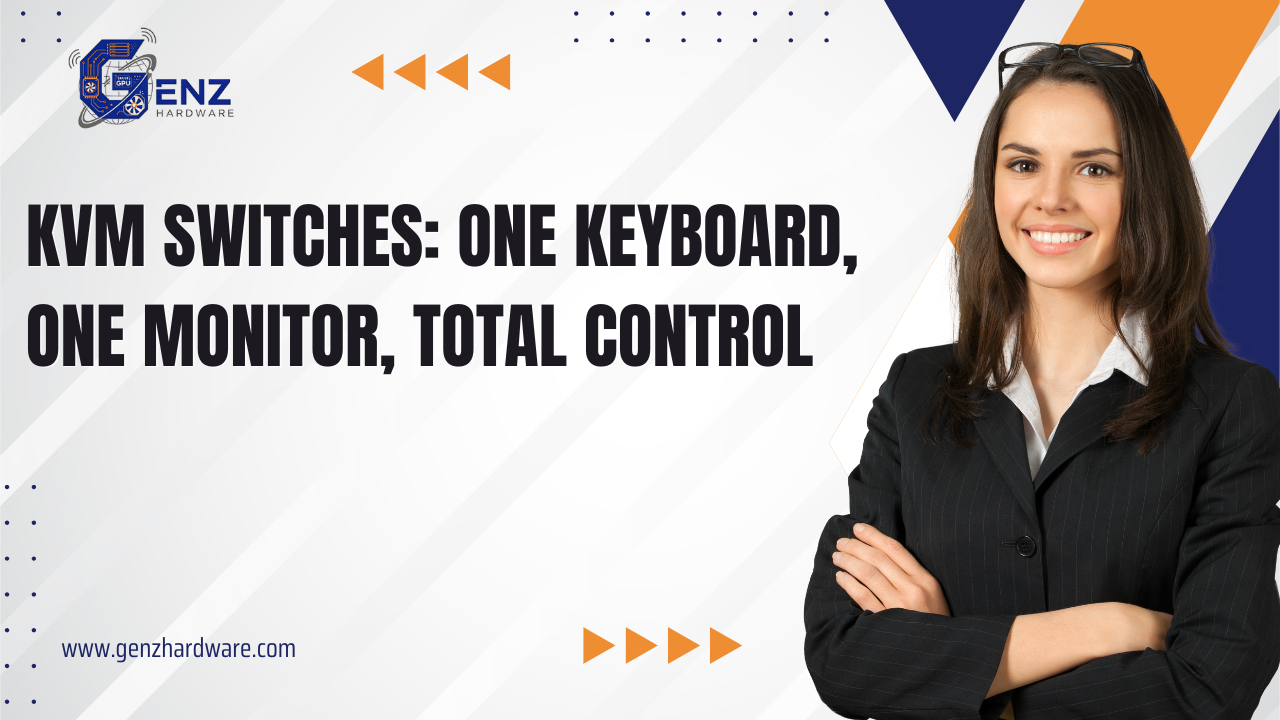
KVM Switches: Simplifying Control Across Multiple Computers
In a modern IT environment, managing multiple systems efficiently is essential. That’s where KVM switches (Keyboard, Video, Mouse switches) come in. These powerful devices enable users to control two or more computers from a single workstation, eliminating the clutter of multiple keyboards, monitors, and mice.
Whether in data centers, server rooms, or professional workstations, KVM switches are invaluable tools for improving efficiency, saving space, and enhancing workflow.
What Is a KVM Switch?
A KVM switch is a hardware device that connects multiple computers to one set of peripherals — typically a keyboard, monitor, and mouse. With a simple switch, users can toggle between computers, controlling each system independently without physically moving between setups.
KVM switches are available in different configurations, supporting 2, 4, 8, 16, or even more systems, making them ideal for small offices, server management, and enterprise-level IT operations.
Types of KVM Switches:
-
Desktop KVM Switches
-
Compact and easy to use.
-
Perfect for users managing two or three systems on a single desk.
-
-
Rackmount KVM Switches
-
Designed for data centers or IT rooms.
-
Allow centralized control of multiple servers within racks.
-
-
IP-Based KVM Switches (KVM over IP)
-
Enable remote access and management over a network or the internet.
-
Ideal for global IT infrastructure management.
-
-
USB and HDMI KVM Switches
-
Support modern connection types for high-definition video and faster data transmission.
-
Key Features and Benefits:
-
Multi-System Control: Manage multiple computers with one set of peripherals.
-
Space Saving: Reduces desk and server rack clutter.
-
Cost Efficiency: No need for multiple monitors, keyboards, or mice.
-
Seamless Switching: Quickly switch between systems with keyboard shortcuts or on-device buttons.
-
High Video Quality: Modern KVMs support resolutions up to 4K UHD.
-
Remote Management: IP-based KVMs allow monitoring and troubleshooting from anywhere.
-
Enhanced Security: Centralized access control for critical systems.
Ideal Use Cases:
-
Data Centers: Manage dozens of servers from a single console.
-
Software Developers: Test and run multiple systems efficiently.
-
Network Administrators: Monitor different OS environments with ease.
-
Work-from-Home Professionals: Control both personal and office PCs from one setup.
-
Manufacturing and Industrial Environments: Oversee system controls in real time.
How to Choose the Right KVM Switch:
When selecting a KVM switch, consider:
-
Number of systems you need to manage.
-
Connection types (USB, HDMI, DisplayPort, DVI, or VGA).
-
Resolution support for your monitors.
-
Network management options for remote access.
-
Compatibility with operating systems and peripherals.
Conclusion:
A KVM switch is an indispensable device for anyone managing multiple systems — whether in a small office, a server rack, or an enterprise environment. It simplifies control, reduces clutter, and enhances productivity by allowing users to operate several computers through a single interface.
With modern features like IP access, 4K video support, and hotkey switching, KVM switches have evolved into vital tools for streamlined system management and efficient IT workflows.








